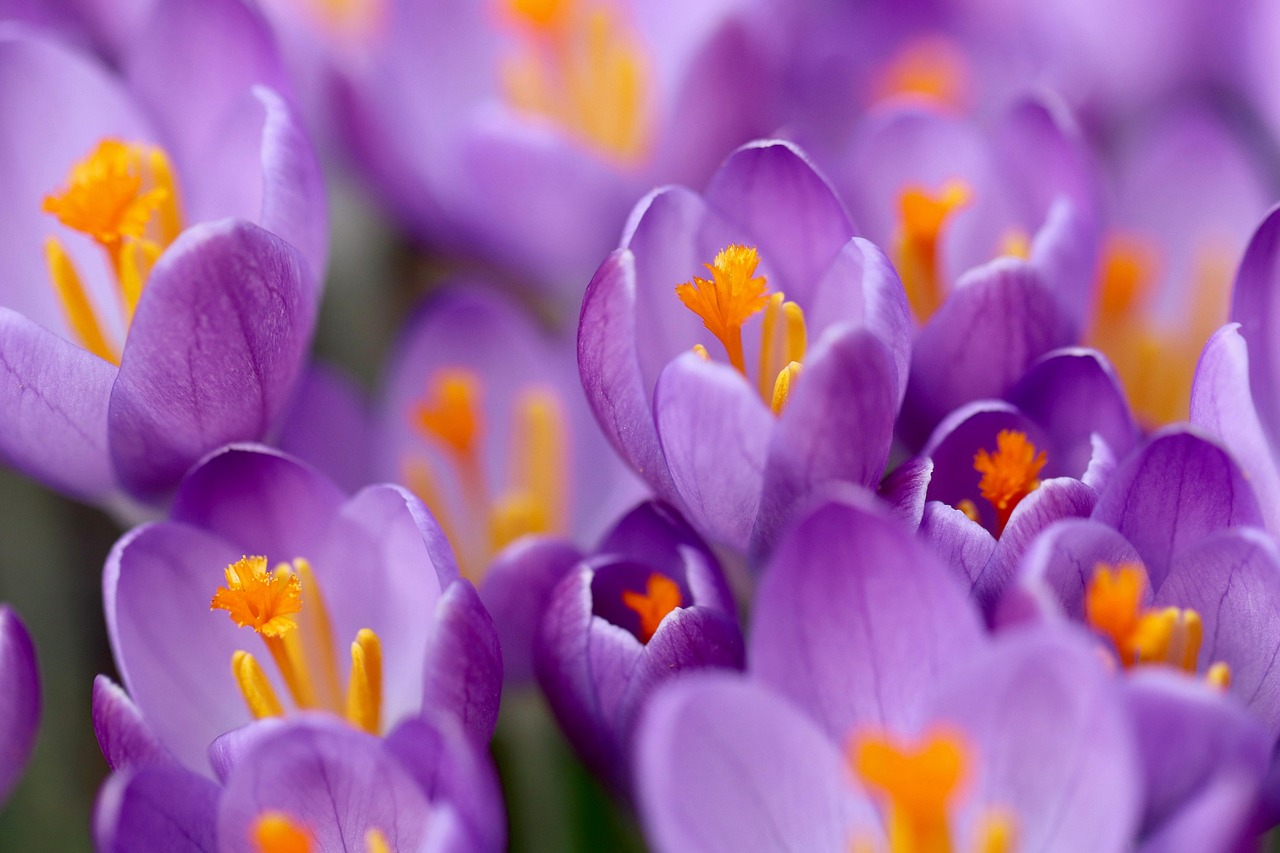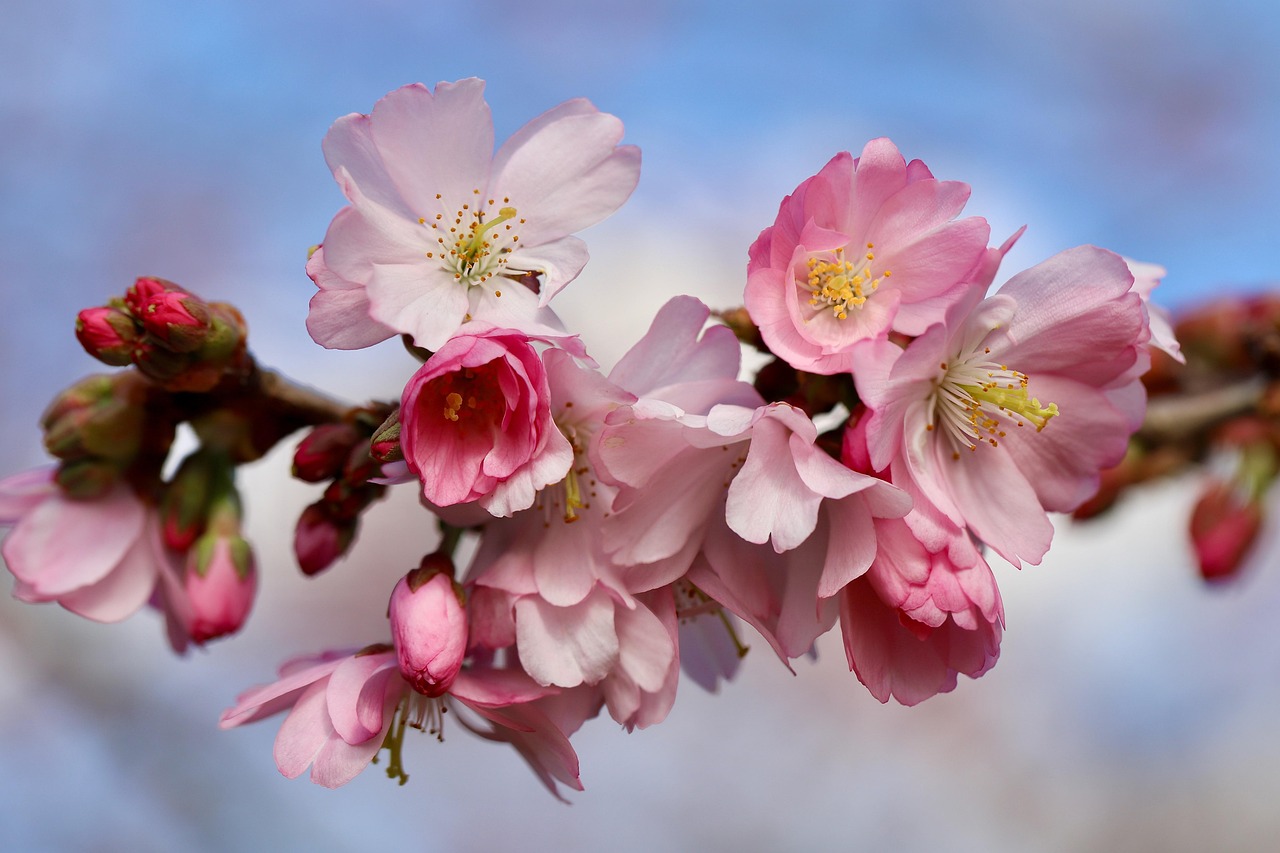For vibrant spring garden color, some of the best early blooming perennials include Crocus, Hellebore, and Pulmonaria. These plants not only brighten up your garden but also provide essential nectar for early pollinators.
Understanding Early Blooming Perennials

Spring is a season of renewal and rebirth in the garden. As the last remnants of winter fade away, early blooming perennials come to life, offering a burst of color and vitality. These hardy plants are essential for gardeners looking to create a vibrant landscape as they awaken from dormancy before most annuals and later-blooming perennials.
Early blooming perennials are characterized by their ability to thrive in cooler temperatures. They often start blooming as soon as the soil begins to thaw, sometimes even pushing through a light layer of snow. This unique trait makes them invaluable for adding early-season interest and color to any garden. Moreover, they play a critical role in supporting pollinators that emerge early in the year.
When selecting early blooming perennials, it is essential to consider their growing conditions. Factors such as sun exposure, soil type, and moisture levels will influence which plants will thrive in your garden. Here are some key considerations to keep in mind:
- Sunlight: Most early bloomers prefer full sun to partial shade.
- Soil Quality: Well-drained soil is crucial for preventing root rot.
- Water Needs: Early bloomers generally require consistent moisture, especially during their initial growth stages.
Top Picks for Spring Garden Color
Choosing the right early blooming perennials can transform your spring garden into a colorful oasis. Below are some top picks that not only provide stunning visual appeal but are also known for their hardiness and ease of care.
| Plant Name | Bloom Time | Color |
|---|---|---|
| Crocus | February – March | Purple, Yellow, White |
| Hellebore | January – April | Pink, Green, White |
| Pulmonaria | March – May | Blue, Pink, Purple |
| Primula | March – May | Yellow, Purple, Red |
These selections not only enhance the aesthetic appeal of your garden but also provide crucial food sources for bees and other pollinators. As you plan your spring garden, consider incorporating these early bloomers for a delightful display that heralds the arrival of warmer days.
In addition to choosing the right plants, it’s important to think about how they will be arranged in your garden. Grouping early bloomers together can create a stunning visual impact. Alternatively, mixing them with late-blooming plants ensures that your garden remains colorful throughout the growing season.
Choosing the Right Location for Early Blooming Perennials
Once you have selected the early blooming perennials for your spring garden, the next crucial step is determining the ideal location for planting them. The right location can significantly influence their growth and flowering potential. Here are some important factors to consider when choosing a spot for your early bloomers:
- Sun Exposure: Most early bloomers thrive in full sun or partial shade. Observe your garden throughout the day to identify areas that receive the needed sunlight.
- Soil Drainage: Ensure that the soil is well-draining. Heavy clay soils can retain too much moisture, leading to root rot. If necessary, amend the soil with organic matter to improve drainage.
- Protection from Wind: Planting in sheltered areas can help protect delicate blooms from strong spring winds that may damage them.
- Accessibility: Choose locations that are easy to reach for maintenance tasks, such as watering, weeding, and deadheading.
Soil Preparation and Planting Techniques
Preparing the soil adequately is essential for the success of your early blooming perennials. Healthy soil promotes strong root systems and vibrant blooms. Consider the following steps for effective soil preparation:
- Testing Soil pH: Before planting, test your soil’s pH to determine its acidity or alkalinity. Most perennials prefer a pH between 6.0 and 7.0.
- Amending Soil: Based on the test results, amend your soil with compost, peat moss, or well-rotted manure to enhance fertility and structure.
- Tilling: Loosen the soil to a depth of at least 12 inches to improve aeration and drainage.
- Leveling: Rake the surface to create a smooth planting bed, free of debris and large clumps of soil.
When it comes to planting your chosen perennials, follow these guidelines:
- Planting Depth: Ensure that each plant is placed at the correct depth. Generally, the crown of the plant should be even with the soil surface.
- Spacing: Allow sufficient space between plants to avoid overcrowding. This promotes good air circulation and minimizes competition for nutrients.
- Watering: Water the newly planted perennials well after planting to help settle the soil around the roots. Keep the soil consistently moist until they establish.
Companion Planting for Early Bloomers
Companion planting is a gardening strategy where different plants are grown together for mutual benefits. When designing your spring garden, consider pairing early blooming perennials with compatible plants to enhance their growth and improve overall garden health. Here are some beneficial companion plants:
- Crocus: Pair with low-growing annuals like pansies or violas for a colorful display.
- Hellebore: Combine with ferns or hostas for an attractive contrast in foliage texture.
- Pulmonaria: This plant works well alongside spring bulbs like daffodils and tulips.
- Primula: Consider planting them near flowering shrubs like azaleas or rhododendrons.
Companion plants can also help deter pests and attract beneficial insects. For instance, planting marigolds alongside your perennials can repel harmful nematodes and other garden pests while drawing in pollinators.
Caring for Early Blooming Perennials
Caring for early blooming perennials is vital for maintaining their health and ensuring they bloom beautifully year after year. Here are essential care tips:
- Watering: Early bloomers require consistent moisture, especially during dry spells. However, avoid overwatering to prevent root rot.
- Fertilizing: Apply a balanced fertilizer in early spring to provide essential nutrients as they begin to grow.
- Deadheading: Regularly deadhead spent blooms to encourage more flowering and maintain a tidy appearance.
- Dividing: Every few years, divide overcrowded clumps of perennials to rejuvenate growth and promote healthier plants.
By following these care guidelines, you can enjoy a flourishing garden filled with colorful early bloomers that brighten your landscape as winter fades away.

Integrating Early Blooming Perennials into Garden Design
Designing a garden that features early blooming perennials can create a stunning visual impact. These plants serve as the first wave of color, awakening the garden from its winter slumber. When incorporating these perennials into your overall garden design, consider various elements to maximize their beauty and effectiveness.
Creating Focal Points
Focal points are essential in garden design, drawing the eye and creating interest. Early blooming perennials can be strategically placed to serve as focal points. Here are some tips:
- Height Variation: Use taller perennials like Hellebore or Pulmonaria at the back of flower beds or near structures for a layered effect.
- Color Contrast: Choose perennials with vibrant flowers that contrast with surrounding foliage to enhance their visibility. For example, pairing yellow Primula with dark green leaves can create a striking appearance.
- Grouping Similar Plants: Plant clusters of the same species together to create bold patches of color that stand out against other garden elements.
Layering Plants for Depth
Layering is a technique that adds depth and dimension to your garden design. By planting early blooming perennials alongside other plants that bloom later, you can create a continuous display of color throughout the season. Consider the following approaches:
- Front to Back Arrangement: Position shorter perennials like Crocus in the front of borders, with medium-height plants like Pulmonaria behind them, and taller varieties like Hellebore at the back.
- Seasonal Overlap: Mix early bloomers with mid-season plants to ensure that when one group finishes blooming, another begins. For instance, plant early spring bulbs with summer-blooming perennial varieties.
- Textural Contrast: Incorporate different leaf shapes and sizes among your perennials to create visual interest. Combining broad-leaved plants with fine-textured foliage can enhance the overall appeal.
Maintenance Practices for a Thriving Garden

The beauty of early blooming perennials is not only in their flowers but also in their ability to thrive with proper maintenance throughout the growing season. Here are some best practices to ensure your garden remains healthy and vibrant:
- Mulching: Apply a layer of organic mulch around your perennials to help retain moisture, suppress weeds, and regulate soil temperature.
- Pest Management: Keep an eye out for pests such as aphids and slugs that can threaten your plants. Natural solutions like neem oil or introducing beneficial insects can help manage these pests without harmful chemicals.
- Disease Prevention: Ensure good air circulation by spacing plants adequately and removing any dead or diseased foliage promptly to prevent fungal infections.
Seasonal Adjustments
As seasons change, so too should your care strategies for early blooming perennials. Here are some seasonal adjustments to keep your garden thriving:
- Spring: Focus on fertilization and removing winter debris. This is also the best time for planting new perennials.
- Summer: Continue watering regularly and monitor for pests. Once blooms fade, consider deadheading to promote additional growth.
- Fall: Prepare your perennials for winter by cutting back dead foliage and applying mulch to protect roots from freezing temperatures.
- Winter: While most perennials go dormant, keep an eye on any exposed roots during harsh weather and cover them if needed.
Combining Early Blooming Perennials with Other Garden Elements
A well-designed garden is more than just plants; it includes various elements that enhance aesthetics and functionality. Consider these key components when integrating early blooming perennials into your landscape:
- Hardscaping Features: Incorporate paths, patios, or stone walls that provide structure and contrast against flowering plants.
- Water Features: Adding ponds or fountains can attract wildlife and provide a serene backdrop for your blooming perennials.
- Garden Furniture: Include seating areas where you can enjoy the beauty of your garden. Position benches or chairs near colorful blooms for an inviting atmosphere.
By thoughtfully combining early blooming perennials with other garden elements, you create a harmonious and engaging environment that celebrates the beauty of spring while providing a welcoming space for enjoyment and relaxation.
Enhancing Biodiversity with Early Blooming Perennials

One of the significant benefits of incorporating early blooming perennials into your garden is the enhancement of biodiversity. These plants serve as vital food sources for early pollinators, such as bees and butterflies, who emerge during spring when food is scarce. By planting a variety of early bloomers, you can create a thriving ecosystem that supports not just pollinators, but also other beneficial insects.
Consider including a mix of native and non-native species to attract a wider range of pollinators. Native plants typically require less maintenance and are better adapted to your local climate, making them an excellent choice for sustainable gardening. Here are some additional benefits of fostering biodiversity in your garden:
- Natural Pest Control: A diverse garden attracts beneficial insects that help manage pest populations naturally.
- Soil Health: Different plant species contribute to soil health through varied root structures and organic matter, improving soil fertility.
- Climate Resilience: Biodiversity helps gardens withstand environmental stresses, such as drought or heavy rainfall, by creating a more robust ecosystem.
Planning for Seasonal Interest
While early blooming perennials are a brilliant way to kick off the blooming season, it is essential to consider how your garden will transition through the seasons. Planning for seasonal interest involves selecting plants that will provide visual appeal throughout the year. Here are some strategies to ensure your garden remains vibrant long after the early bloomers fade:
- Select a Range of Bloom Times: Choose perennials that bloom at different times. This ensures that as early bloomers finish, others take their place, maintaining color in your garden.
- Incorporate Foliage Plants: Even when flowers are not in bloom, attractive foliage can provide year-round interest. Consider plants with colorful leaves or unique textures.
- Add Late-Season Bloomers: Include perennials that bloom later in the season, such as asters or sedum, to ensure your garden has color well into the fall.
Incorporating Sustainability in Your Garden
Sustainable gardening practices not only benefit your immediate environment but also contribute positively to the larger ecosystem. By choosing early blooming perennials and incorporating sustainable practices, you can create a beautiful garden that is also environmentally friendly. Here are some sustainability tips:
- Use Organic Practices: Avoid synthetic pesticides and fertilizers. Instead, opt for organic alternatives that support healthy soil and plants.
- Water Wisely: Implement water-saving techniques, such as drip irrigation or rainwater harvesting, to conserve water while keeping your plants hydrated.
- Compost: Create a compost bin to recycle garden waste and kitchen scraps, providing nutrient-rich material for your plants.
Conclusion
Incorporating early blooming perennials into your garden offers numerous benefits, from adding vibrant colors in spring to enhancing the overall biodiversity of your landscape. By carefully selecting and arranging these plants, you can create a stunning visual display that transitions beautifully through the seasons. Additionally, practicing sustainable gardening methods ensures a healthy ecosystem while providing a flourishing environment for pollinators and other wildlife.
The journey of gardening is one of exploration and creativity. As you experiment with various combinations of early blooming perennials and other garden elements, you will discover what works best for your unique space. Embracing this process not only enriches your gardening experience but also contributes positively to the environment. With thoughtful planning and care, your spring garden can become a vibrant sanctuary filled with life and color.
